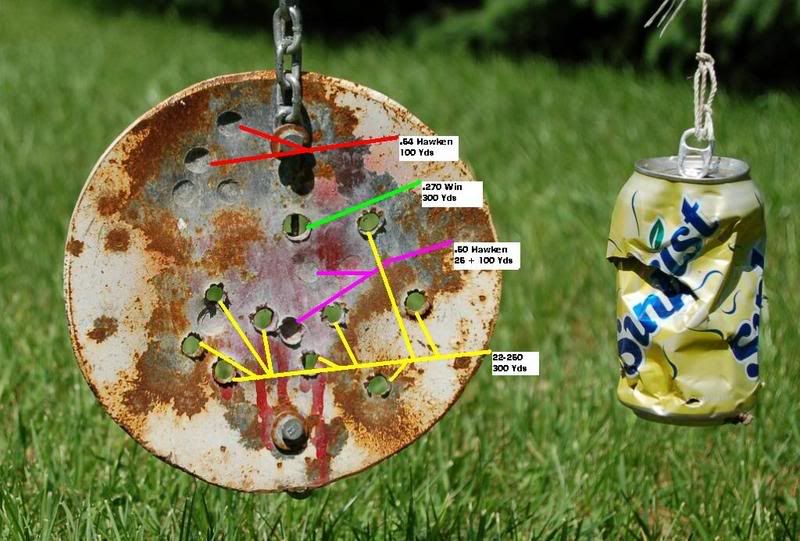I don't know anything about 262 engines. I do have a picture that will show how bulletproof steel is. This target is a 1/4" plate, hanging/swinging from a chain.
The amazing thing about this picture are the holes that were made by the 22-250. It shoots a tiny bullet (only 55gr in weight), but very fast. It passed through the steel so easily that the free hanging plate didn't even move. I thought I was missing the target at first.
These little bullets were hollowpoints. They are designed to hit a coyote, expand rapidly, and NOT come back out. They DO NOT go through a 35 pound coyote, unless you hit it in the "wrong" spot. They do nasty things on head shots though. The idea here is to NOT have an exit wound, and the associated damage to the pelt.
The hole from the .270 WIN is with a 130Gr softpoint, used for deer. It is interesting as well, because the bullet also cut through the 1/2" steel rod that was directly behind where the bullet hit.
Every shot, at 300 Yds, with a centerfire rifle passed through the steel. Remember, these bullets are designed to do damage to flesh, not steel.
The "dents" are from muzzleloading rifles. 50 and 54 cal. These bullets are simply round lead balls and are traveling at a very low speed compared to the centerfire rifle. A few of the dents are from my .75 musket as well. (the .75 is about 800 FPS, the 54 about 1800, the .270 about 3000, and the 22-250 about 4000 FPS).
Obviously, this was not "aircraft" grade steel, but then these were not bullets/firearms designed to shoot at "aircraft" grade metal. A kevlar vest wouldn't fare well against these bullets/speeds either.
Also, this was 1943 ish, right? When looking at my 1959 technology outboard(boat motor), compared to the holes in this steel, I'm thinking an engine is going to take some pretty severe damage. I don't want a bullet in my boat motor out in a lake, let alone going through my airplane engine at high speed, high RPM and high altitude.

MtnMan